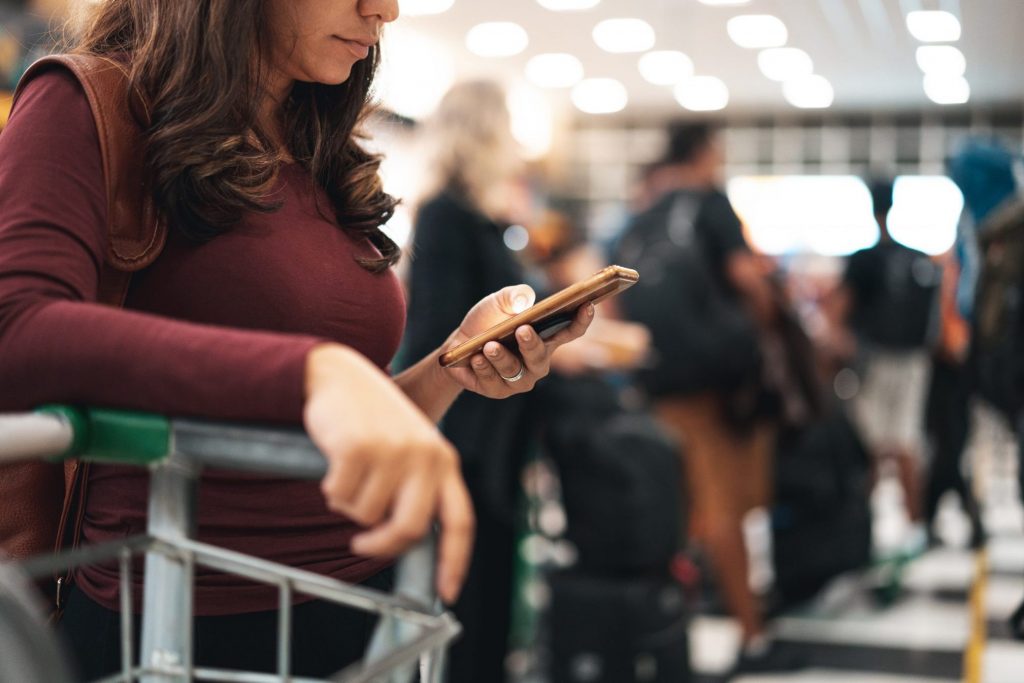Skift Take
Deferred payment models are nothing new, but as travel recovers, airlines and others in travel need to find innovative ways to accept payments. It's far from certain that this payment model will help speed up a recovery, or prove to be another huge burden for customers.
As the world and travel industry looks to a return to normalcy, more and more airlines are turning to the buy-now, pay-later model, offering customers a travel recovery incentive to purchase their next adventure or family vacation on credit.
For example, Malaysia Airlines partnered with Fly Now Pay Later, a London-based company offering the airline’s UK travelers the option to book their trip now and pay later. Malaysia Airlines’ travelers choosing the Fly Now Pay Later payment option at checkout can choose a payment installment that works for them with an interest rate of 29.9 percent, the airline’s website said.
“Malaysia Airlines is always looking at solutions that will enhance our customer service offering further. Together with Fly Now Pay Later, we see a huge opportunity to do something innovative that helps travelers by offering a flexible, controlled and customer-centric option to spread the cost of paying for a holiday over a number of months,” said Daniel Bainbridge, the airline’s regional manager for the UK and Europe.
Bainbridge said Malaysia Airlines’ convenient payment alternatives diversify customer choice and decrease cart abandonment rates.
With so many airlines and travel brands around the world offering deferred payments to their customers, is the buy-now, pay-later the future for travel recovery?
“It’s a brilliant strategy for airlines to increase revenue and a service many people would appreciate,” said Brad Klontz, associate professor of financial psychology and behavioral finance at Creighton University’s Heider College of Business, who equates deferred payments to the famous Popeye cartoon’s Wimpy quote “I’ll gladly pay you Tuesday for a hamburger today.”
Klontz said this whole concept has been around for a very long time. And one of the barriers for people going on vacation is that they can’t afford it, or don’t have the money right now, and this obviously reduces that friction pretty significantly, he said.
Over the course of the pandemic, airline executives have pointed to an increase in “cart abandonment” at checkout due to the pandemic uncertainties, but the reality is even before the pandemic this was an issue for the travel industry.

Malaysia airlines is offering its customers the the option to Fly Now Pay Later. Photo courtesy of Fly Now Pay Later
Founded by Jasper Dykes and financier Stuart Jeffrey in 2015, Fly Now Pay Later has partnerships with Kayak and Lastminute.com to name a few travel brands, and recently secured further funding of $14 million (£10 million), bringing its total to $62 million (£45 million), a spokesperson said. It is one of many companies partnering with airlines and travel brands to offer customers the option of buying in the moment without incurring the immediate cost burdens.
Removing Friction
An Amadeus frictionless travel payments survey published in January found that effectively accepting traveler payments will become a priority as the industry moves towards a gradual recovery, the study said.
“The travel industry is more global, more intermediated and generally more complex than traditional retail sectors such as fashion, food, and lifestyle. This means even more attention is needed to re-imagine new and innovative payment systems that remove friction for travelers and deliver value for the industry,” the Amadeus study said.
The study found that during the pandemic, 84 percent of travelers prefer to pay with non-cash methods, and there’s been a six percent shift away from cash.
Several global airlines including Lufthansa, Aeromexico, United, TAP Air Portugal, Porter, Sunwing, and Alaska Airlines are partnering with Uplift, an enterprise Buy Now Pay Later company serving many well known travel brands across the globe, to offer customers flexible payment solutions at checkout.
Uplift is also available on every major low-cost air carrier in the United States, including Spirit, Frontier, and Allegiant, an Uplift spokesperson said.
In April, Uplift brought Southwest Airlines into its fold after already partnering with Southwest Vacations.
“Customers can book their Southwest flights to more than 100 U.S. and international destinations while using Uplift’s flexible payment options to pay over time for their travel. Using Uplift as a Buy Now Pay Later payment option gives Southwest Customers the freedom to book trips when they are ready, and spread the cost over a series of affordable monthly payments,” a Southwest spokesperson said.

A Southwest airlines ad explaining how its deferred payment options with Uplift works. Photo courtesy of Southwest Airlines
The company said Uplift is seamlessly integrated into its Southwest.com booking process providing for an easier customer experience. Customers will see the total cost of their trip at the time of booking along with the monthly payment amount, letting them take control of their budget, a spokesperson said.
“Our partnership with Uplift will help open up the possibilities of affordable travel to even more people, just in time for the summer vacation season and beyond,” a Southwest spokesperson said.
In Mexico, ultra low-cost airline Volaris is also partnering with Uplift to offer the deferred payment options for fares between $300 to $10,000 to U.S. citizens with an existing credit card. Additionally, the airline which offers flights in the U.S., Mexico, and Central America has several innovative payment options including PayPal or paying in person at participating 7-Eleven, Oxxo, Walmart or other partners after making a booking through the airline.
Mexican budget carrier Viva Aerobus is also offering Uplift deferred payment options and the opportunity for customers to pay at a later time the TUA or airport departure fee Mexican airports charge for the use of their facilities and restrooms to all passengers over the age of two.
Besides Uplift, Air Canada offers its customers several payment options including bank transfers, PayPal, ApplePay and WeChatPay, which is widely used in China.
“Uplift offers no-interest and simple interest loans, which means that interest is paid only on the principal of the loan, and not on any interest from previous periods of the loans,” said a company spokesperson.
Go Simple on Interest
The difference between using a credit card and using the Uplift deferred payment method is customers are charged a simple interest letting them know exactly how much they will be paying up front and when their payments will be done, the company said.
Uplift never charges a late fee or prepayment penalty and it allows a specific trips to be kept separate from all other expenses on a card to allow for easier budgeting, the company said.
American Express is also jumping into the game with its travel services, but unlike other companies offering a deferred payment plan, it isn’t partnering with anyone.
Instead choosing to integrate “Plan It,” its proprietary buy-now pay-later feature into American Express U.S. consumer cards and managed directly from the Amex App or their online account with no additional applications or loans, said Audrey Hendley, president of American Express Travel.
“We recently announced that American Express U.S. Consumer Card Members can now book flights at AmexTravel.com and pay later using Plan It at checkout. We will also be adding Plan It to the checkout experience for prepaid hotel bookings on AmexTravel.com later this year,” Hendley said.
Hendley said American Express Travel has integrated Plan It directly into the checkout experience to give its card members more payment flexibility for flight purchases of $100 or more, which allows them to better manage the overall costs of their trip by choosing to pay in monthly installments.
Because Amex card members love to travel, the company is helping them make the most of their next trip by providing eligible card members with a variety of hotel and air offers through AmexTravel.com, including complimentary nights and property credits at participating fine hotels, resorts and The Hotel Collection properties as well as discounted airfare on select flights, Hendley said.
“There’s a lot of pent-up demand and right after the last pandemic, the Spanish Flu, came the Roaring ’20s and things were so out of control that Prohibition followed, so I think there’s a bunch of demand to see people they haven’t seen or things they had to put aside and people are feeling it,” Creighton University’s Klontz said.
Amex’s Hendley said her company sees the role of the trusted travel advisor helping with all aspects of planning a trip becoming increasingly important.
“Because of this, we are continuing to invest in travel and support our customers’ needs by uplifting our high-tech meets high-touch servicing. This includes investing in new digital tools to enhance the booking experience for customers, providing access to the latest travel policies through our ‘Amex Travel COVID-19 Info Hub’ and deepening the knowledge and skills of our travel consultants to better help our customers navigate the ever-changing travel landscape of today and tomorrow,” she said.
Creighton University’s Klontz calls the increased spending optimism for the future. It’s a positive emotion all of which makes us want to spend more money, he said.
“And what’s so fascinating about it is our savings rates in the midst when it got really bad, were the highest they’ve ever been in history. When we’re really optimistic about what’s happening, this just seems to be a common pattern in our culture that we’re more likely to spend when we’re scared or more likely to save,” he said.
Have a confidential tip for Skift? Get in touch
Tags: air travel, airlines, american express, coronavirus recovery, travel trends, uplift
Photo credit: Customers like this one shown here are increasingly using airline flexible payment methods to enjoy themselves first — and pay later. Pollyana Ventura / Getty Images
